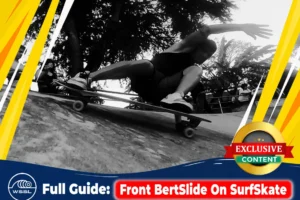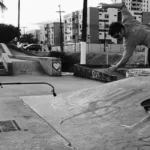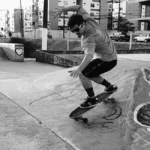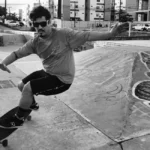
How To Do a Backside Snap On SurfSkate?
- Categories Techniques
- Date March 17, 2024
Full Guide: Backside Snap On SurfSkate
Close your eyes and imagine yourself sliding the tail of a surfsimulator in slow motion over the top of the concrete wave…
In this exclusive surfskate tutorial, we will explore the main technical skills, biomechanics of movements, body awareness, among other important details for you to build the muscle memory of the exercises that will enable you to execute a perfect backside snap on the surfskate. Check it out!
Topics Of Article
I recommend that before attempting the backside snap, you should already be familiar with the basic fundamentals of the new surfskate modality. If you don’t know yet, learn here!

Full Guide: How To Do a Backside Snap On SurfSkate?
Step 1: As always, for you to properly train the development of new technical skills in surfskate, it is essential to choose an ideal track, preferably on ramps whose shape resembles concrete waves.
Assuming you already master the basic lessons of surfskate, then generate enough speed to climb to the top of the ramp and execute a simple turn using the flexibility of the front truck.
*Attention: Make every effort to avoid displacing the front wheels of the surfsimulator from the surface.
Start slowly and gradually increase speed to perform only the top turn.
Step 2: Drive along a rail parallel to the concrete wave, project a sinuous setup turn at the base of the wave, and begin climbing by tracing long arcs along the top of the wall.
The next step will be to ride the same arcs at the top of the wall, now stimulating the gradual shortening of the curves as you approach the finish.
Step 3: Stimulate your perception by focusing the direction of the top turn through the front base of the surfsimulator with the gravitational weight of your body, which will naturally reduce the pressure from the back base on the surface, so take advantage of the moment to propel small drifts.
Next, simulate the completion of the maneuver with an upper body posture that you feel most comfortable with, but strive to keep your hips low and transfer your weight evenly back between the bases.
Repeat this several times to build muscle memory and feel confident, as these exercises will be precursors for you to develop the next specific technical skills of the Backside Snap that we will teach in this SurfSkate tutorial.
Step 4: Drive the continuity of your movements with the help of your body expressions. For this, it is important that you already have in mind reference postures for each specific point.
Initially, we will explore in this SurfSkate Tutorial some fundamental backside postures, such as: Bottom Turn, Decompression, Body Trigger, Explosion and Finish.
Bottom Turn
The projection of the bottom turn is essential in surfskate because, in addition to the functional aspects of posture, direction, and propulsion, it also visibly characterizes the maneuver preparation, similar to surfing, which is even more relevant in this specific case for reproducing the backside snap.
Without a good bottom turn, you will never achieve a solid hack. Because the line you trace makes all the difference!
Therefore, to execute a backside snap perfectly in surfskate, you need to ride a deep sinuous rail at the base of the wave, so that it is minimally sufficient to climb the wall straight.
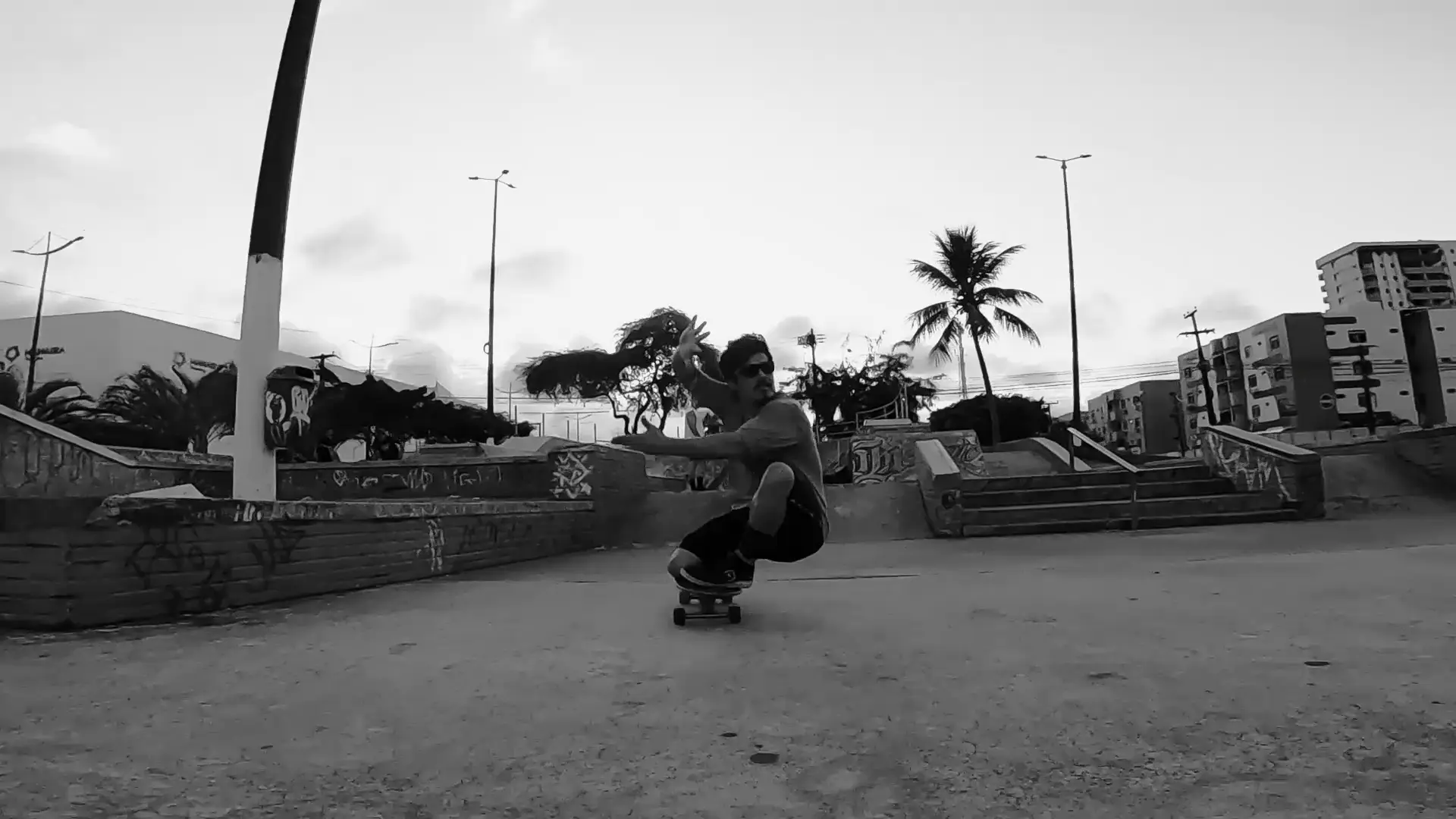
Here is my bottom turn posture as a reference:
- I compress the body through the low hip
- I lower the back knee close to the deck
- I keep the back arm semi-flexed at shoulder height with the palm of the hand facing outward following the movement
- I drive the front arm perpendicular to the surfsimulator at torso height, with the palm of the hand facing upward following the horizontal direction arc with gradual thumb rotation inward.
Decompression
This technique is crucial to ensure that you make a strategic transition between a previous posture to the critical point of the maneuver.
Imagine yourself as a body spring, when you are fully compressed in the bottom turn position, you acquire elastic potential for propulsion. However, you must know how to manage the gradual dispersion of this energy in your favor to perform the maneuver with power (force + speed).
The decompression should be done gradually with redistribution of body weight between bases and symmetry of body expressions, as necessary for you to generate sufficient speed and maintain control until you reach the critical point of the maneuver.
At the apex moment of the backside snap, you should release all your energy towards the movement. Follow the topics below to perform the maneuver consistently!
Body Trigger
During the decompression range, I like to turn my torso as much as possible towards the inside of the concrete wave because this dissociation between torso/hip allows me to explode with more power in executing the maneuver.
Through assertive control of the upper limbs, aligned with head direction, it’s possible to amplify this movement.
I often refer to them as body triggers!

Never forget this special tip about SurfSkate: “Advanced SurfSkaters go beyond by projecting a re-entry line during the wall climb allowed by their body posture, this technique empowers athletes to perform more radical maneuvers!” WSSL – CEO Rafael Azevêdo
DO YOU WANT TO JOIN THE WSSL?
Join our WhatsApp group to receive special tips about SurfSkate for free.
Trunk rotation and hip dissociation are also crucial for improving visualization of the concrete wave, allowing the surfskater to identify the ideal timing and momentum to execute the maneuver with more radicality and precision.
A suggestion for practicing trunk rotation is to perform specific pre-training exercises focused on rotating the trunk and turning the head, always directing your gaze over the shoulder.
Explosion
This is the moment that demands the highest body awareness from the surfskater, as it involves the synchronization of a set of factors, including: timing, momentum, and maneuver precision.
Therefore, the backside snap will be performed with greater consistency as you combine all of this with the muscle memory of assertive body expressions.
Conclusion
During the execution of the backside snap maneuver on surfskate with an assertive posture, notice that my arms undergo a circumstantial inversion of functionalities.
When the trigger of the front arm is pulled, it propels me forward. After the critical moment of the maneuver, the same front arm takes on the task of control.
Meanwhile, the back arm projects the rotation direction to the tail of the surfsimulator and subsequently maintains the stability of the movement.
Another important detail is related to the lower limbs, as the bending of the back knee during the completion of the maneuver allows me to generate speed when I’m still on the upper part of the concrete wave, in addition to stabilization time and weight redistribution between the bases.
Finally, pay attention to finish the maneuver with style, expressing a body posture capable of efficiently linking to the next maneuver.
Rafael Azevêdo pioneered SurfSkate and developed this new authentic modality in 2014 through hosting championships and social events in Brazil.
He built the legend StreetStyle SurfSkate Park and established the key criteria through WSSL to globally regulate the new surfskate modality.
Full-stack professional in Marketing and Technology, SurfSkate Coach, Content Producer, and CEO of the World SurfSkate League.
You may also like
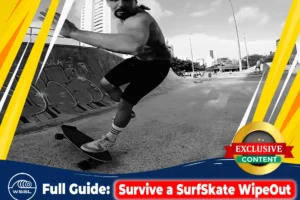
How To Survive a SurfSkate Wipe Out?

How To Do a Frontside Floater On SurfSkate?
